6×4重型牵引车驾驶室悬置系统设计与平顺性分析毕业论文
2020-04-10 16:46:05
Graduation Design (Dissertation) of
Wuhan University of Technology
6*4 Heavy Duty Tractor Cab Suspension Design
and Ride Analysis
College: Institute of International Education
Specialty amp; Class: Auto Engineering GJ1401
Student name: Hao Yan
Tutor: Xiaohe Deng
Statement of Originality
I solemnly declare that the thesis I submit is a piece of writing I completed independently based on my own research under the guidance of my supervisor. Except for the quotations, this paper does not include any writings published or completed by other individuals or groups. I am fully aware that the legal consequences of this statement are borne by me.
Signature of the author:
Date:
Copyright Letter of Authorization to
The Dissertation
The author of this dissertation fully understands provisions stipulated by this school on keeping and using dissertations. The author agrees that the school can reserve and send photocopies and electronic versions of this thesis to relevant departments or institutions managing dissertations. This thesis can be read and borrowed. I hereby authorize excellent provincial institutions appraising bachelor dissertations to incorporate all or any part of this dissertation into relevant databases for retrieval, as well as to preserve and compile this dissertation by photocopying, scanning or reprinting it in a reduced format.
This dissertation is: 1. Confidential until(year) and then this authorization letter will apply. 囗
2. Non-confidential. 囗
(Please tick "√" the corresponding box above)
Signature of the author:
Date:
Signature of the tutor:
Date:
The simulation and optimization of heavy tractor cab suspension
Abstract
The cab suspension system is a system that is connected by a flexible element between the cab and the frame. With the continuous development of the tractor technology, how to improve the ride comfort of the driver, reduce the driver's fatigue strength, and improve the vehicle's security has become an important factor for designers to consider. A good suspension system can effectively isolate the transmission of engine vibration to the cab, and it can also reduce the impact of road surface excitation on the vibration of the cab. Therefore, it is very important to optimize the design and analysis of the suspension system.
This article starts from the research background and significance of the research, combines domestic and international research status, based on the three-ring Yulong T380 heavy-duty tractor as the design object, to optimize the cab's ride comfort. Through analyzing the composition and working methods of the two suspensions of the full-floating spiral spring suspension system and the air suspension system, and using ADAMS to establish the complete vehicle model of the heavy-duty tractor under the two suspension systems, including the various subsystems. , And under various operating conditions, various parameters of cab smoothness are calculated by simulation. By comparing the impact of the design of the two full-floating suspension systems on cab smoothness, a rough design scheme is determined, and finally the test method is passed. The key parameters (spring stiffness and shock absorber damping size) of the suspension system are optimized. The analysis and calculation results show that the optimized full-floating suspension system can more effectively improve cab smoothness.
Keywords: helical spring; air suspension; MATLAB/Simulink; ADAMS simulation; ride comfort analysis
Contents
Chapter One Introduction 1
1.1 Research on vehicle driving smoothness 1
1.2 Research status at domestic and foreign 2
1.3 The main research content of the paper 3
1.4 Design goals of the paper 4
1.5 Summary of this chapter 4
Chapter Two Introduction to Cab Suspension System 6
2.1 Classification of cab suspension system 6
2.1.1 Full-float cab 6
2.1.2 Half-float cab 7
2.2 Main functions of cab suspension 7
2.3 Factors affecting the selection of mounting parameters 8
Chapter Three Design Calculation of Cab Suspension Components and 3D Modeling 9
3.1 Helical spring design calculation 9
3.2 Shock absorber design calculation 11
3.2.1 Selection of the main performance parameters 11
3.2.2 Determination of the major size parameters 12
3.3 Cab suspension 3D modeling 13
3.4 Summary of this chapter 15
Chapter Four Mathematical Modeling and Ride Analysis based on MATLAB/Simulink 16
4.1 Establishment of a four-degree-of-freedom model for tractors 16
4.2 Four-degree-of-freedom ride comfort mathematical model 18
4.2.1 Establishment of a four degree of freedom ride model 18
4.2.2 Air spring elasticity calculation 19
4.3 Sample physical parameters model 20
4.4 The establishment of a random pavement model 20
4.5 Establish a Simulink ride analysis model 21
4.6 Four degrees of freedom ride model time domain simulation 22
Chapter Five Optimization Design and Analysis Based on ADAMS 25
5.1 Introduction to multibody dynamics software ADAMS 25
5.2 Cab Suspension System ADAMS Modeling 25
5.3 Simulation verification of the simplified model 26
5.3.1 Front suspension parameter optimization design 27
5.3.2 Rear suspension parameter optimization design 28
Chapter Six Conclusions and Prospects 30
6.1 Working conclusions 30
6.2 Working prospects 30
References 31
Acknowledgements 32
Chapter One Introduction
- Research on vehicle driving smoothness
When the car is driving, the vibration of the car is stimulated by uneven road surfaces and rotating parts such as the engine, the drive train, and the wheels. The uneven road surface is the basic input of the car vibration. The smoothness of the car is mainly to maintain the vibration and impact of the car in the driving process. The influence of the environment on the occupant comfort is within a certain limit. Therefore, the ride comfort is mainly evaluated according to the comfort of the subjective feeling of the occupants. Including the maintenance of intact cargo performance, it is one of the main features of modern high-speed cars.
The smoothness of the car can be analyzed by the block diagram of the "road-automobile-human" system shown in Figure 1-1. Road roughness and speed have formed an "input" for the vehicle's vibration system. This input is transmitted through the vibration system consisting of elastic, damping elements such as tires, suspensions, and seat cushions, and suspended and unsprung masses to obtain the output of the vibration system. The acceleration of the suspension or the further acceleration transmitted to the human body through the seat. This acceleration is evaluated by the body's response to vibration - comfort to evaluate the smoothness of the car.
Evaluation index
Weighted acceleration
rms value
Impact suspension
limit probability
Driving safety
Output
Acceleration of the car
transmitted to the human body
Suspension spring deflection
Dynamic load between
wheel and road
vibration system
elastic element
damping element
Body, wheel quality
input
road roughness
speed
Figure 1-1 Block Diagram of "Pavement-Automobile-Human" System
The influence of mechanical vibration on the human body depends on the frequency, intensity, direction of action, and duration of the vibration. Each person's mental and physical qualities are different, so the sensitivity to vibration is very different. The main purpose of the study of ride comfort is to control the dynamic characteristics of the vehicle's vibration system so that the "output" of the vibration does not exceed a certain limit under the "input" of a given operating condition in order to maintain the occupant's comfort.
- Research status at domestic and foreign
In order to improve the ride comfort of heavy-duty tractor cabs, domestic and foreign automakers have been devoted to the study of feasibility methods. With the rapid development of suspension technology, a cab suspension system developed on this basis has been developed. Allows the driver to experience better ride comfort, where the structure and parameters associated with the cab suspension system play a crucial role in comfort. In the current research situation, the virtual prototype technology and the finite element analysis based on the ADAMS simulation model are used to conduct related research.
In terms of tractor technology, many companies represented by Dongfeng Motor Co., Ltd. cited the cab suspension isolation technology in the design of the tractor to improve cab ride comfort. Before 2000, most heavy-duty vehicle manufacturers used rubber-buffered cab suspensions, but the rubber suspensions had the limitation that the damping was too small and did not meet the requirements of seismic isolation. Therefore, in the current heavy-duty cab suspension design Instead of selecting this type of suspension structure, the suspension system is formed by using elastic damping elements. The cab is suspended on the frame and divided into two types: full-flight cab and semi-float cab.
以上是毕业论文大纲或资料介绍,该课题完整毕业论文、开题报告、任务书、程序设计、图纸设计等资料请添加微信获取,微信号:bysjorg。
相关图片展示:
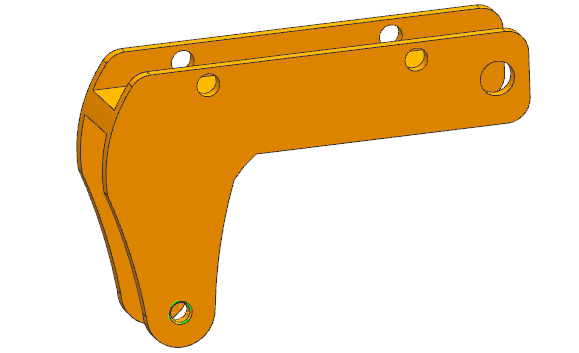
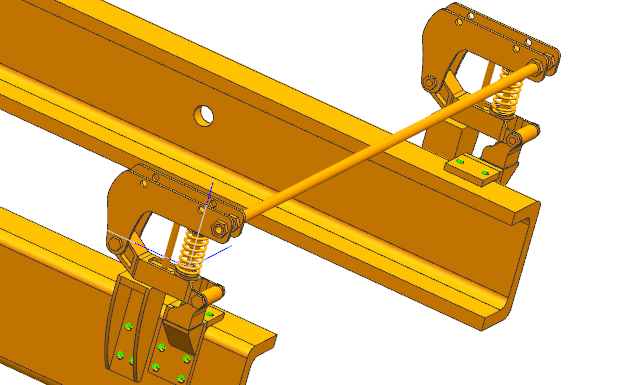
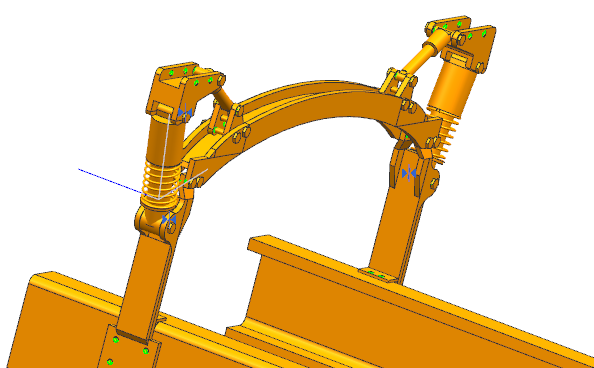
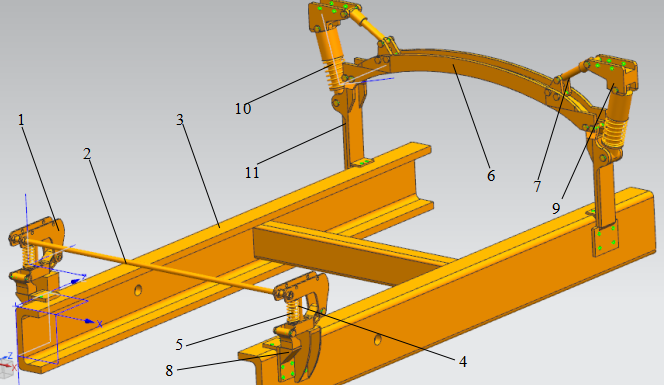
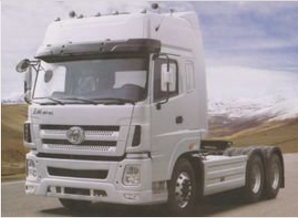
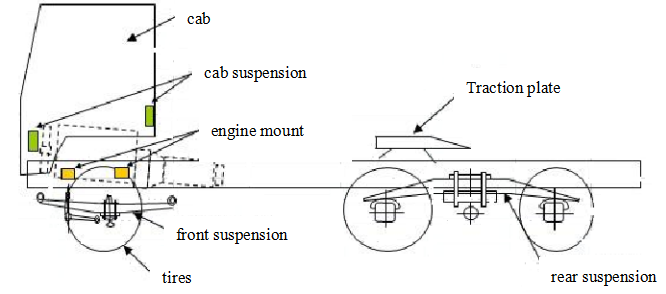
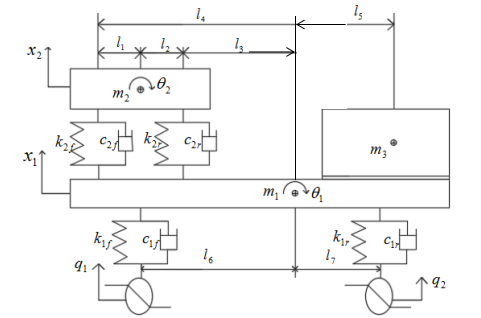
课题毕业论文、开题报告、任务书、外文翻译、程序设计、图纸设计等资料可联系客服协助查找。



